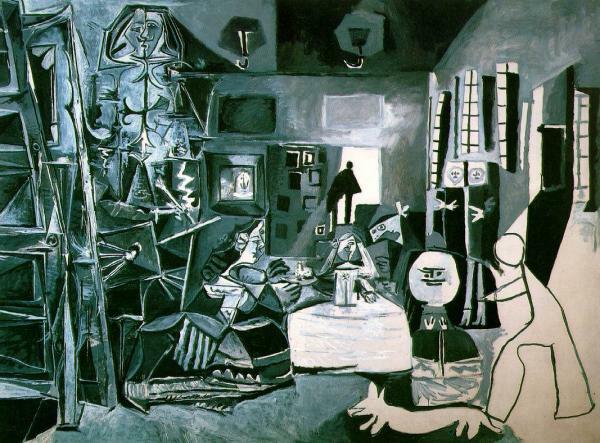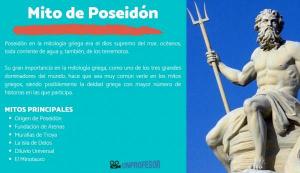Picasso's Las Meninas - Analysis

Picasso was always a great admirer of Diego Velázquez. When he was only 13 years old, on the trip he made from Malaga to La Coruña, he first visited the Prado Museum of which he would say, years later he ended up becoming the director. On that visit, the painting of Las Meninas caught his attention so much that from then on he had a clear decision in his life: make your own version of Las Meninas. Next, in this lesson from a TEACHER we are going to do a little analysis of Picasso's Meninas, a series of paintings that the artist carried out in 1957.
Las Meninas by Velázquez it is unique, in the sense that it is only a work. On the contrary, it happens with Las Meninas by Picasso Well, it is a series composed of a total of 58 frames that Pablo Picasso made between the months of August and December of the year 1957.
Of that total, only 45 are interpretations of Velázquez's work, the rest correspond to nine scenes from pigeons that are what he saw from one of the windows of his workshop, three landscape scenes and a portrait of Jacqueline.
During those four months, Pablo Picasso carried out a large exhaustive study recreating and reinterpreted one of the most famous paintings that the history of art has given us, Las Meninas de Velazquez. At that time, he was spending the summer in one of his houses that was on the outskirts of Cannes (France) and, for this, he set up a new studio different from where he used to paint, in the second plant.
One day before making what would be his first work, on August 16, 1957, he made a preparatory drawing which can currently be seen in the Picasso Museum in Barcelona, donated in 2009 by his daughter Catherine. He also commissioned, to keep the painting in mind, a photographic enlargement of Velázquez's Las Meninas, in black and white.
The rhythm that followed for the realization of these works was irregular but intense, that is, he could go several days without stepping on the workshop but suddenly come to inspiration and do two works in the same day, yes, he dated them meticulously one by one, hence, we know that the first work to be done was completed on August 17, 1957 and the last on December 30, 1957.
Thetechnique for each of them is the same: oil on canvas. And the measurements are variable because we can find canvases of large formats, that is, 194 cm by 260 cm, and other smaller ones of 18 cm by 14 cm.
To finish, say that it is the only series by the painter that is fully preserved in the Picasso Museum in Barcelona. Picasso donated it to the museum in May 1968 in honor of the memory of Jaime Sabartés, a great friend of his, and secretary of that institution.
In this other lesson we offer you a summary biography of Picasso.

Image: Blog Museu Picasso
Let's go into it analysis of Picasso's Meninas deeper and more technical.
Picasso, throughout his artistic career, always had artists who turned out to be a source of inspiration for him: Degas, Goya, Ramón Casas, Velázquez... were some of them. At the time of making his Meninas, Picasso never wanted to make a copy of the original work, but rather a reinterpretation of it, thus establishing a synthesis between what was once the classicist tradition and now cubism.
The fact is that both the composition, the volume and the atmosphere will be respected from the original work; On the other hand, the characters, as well as the objects depicted, are the ones who will see that reinterpretation of the style of which he was the creator suffer. the cubism.
As we have already commented previously, the series is made up of a total of 58 works of which 45 were based on that interpretation of Velázquez's painting, now Well, of those 45, 21 are treated jointly, 14 only and exclusively to Infanta Margarita, 5 to Isabel de Velasco and the remaining five to María Agustina de Sarmiento.
In the first work, for example, represented all the characters that appear in Velázquez's oil painting, being the largest painting after Guernica, and it will be precisely from this last painting that he makes use of the same technique, the grisaille, which is why this first version of Las Meninas is reduced to black and grayish tones.
He is also going to innovate on the subject of format and palette and it is that Picasso, he opted for different formats also focusing on what he was going to represent, because if only one character was to be represented, the format of this was smaller, hence the variety in terms of the measurements of the canvases. Another thing was to opt for landscape formats that contrasted with Velázquez's canvas, which was vertical.
As for the palette we will also see a great variety because while in Velázquez's we see a canvas ruled by earthy tones, Las Meninas Picasso's range from black and white renderings, as we have already referred to in the first version, and little by little they will gaining in color variety, yes, making clear through the representation of monochrome, flat and pure colors, the influence of one of the most important characteristics of cubism.


